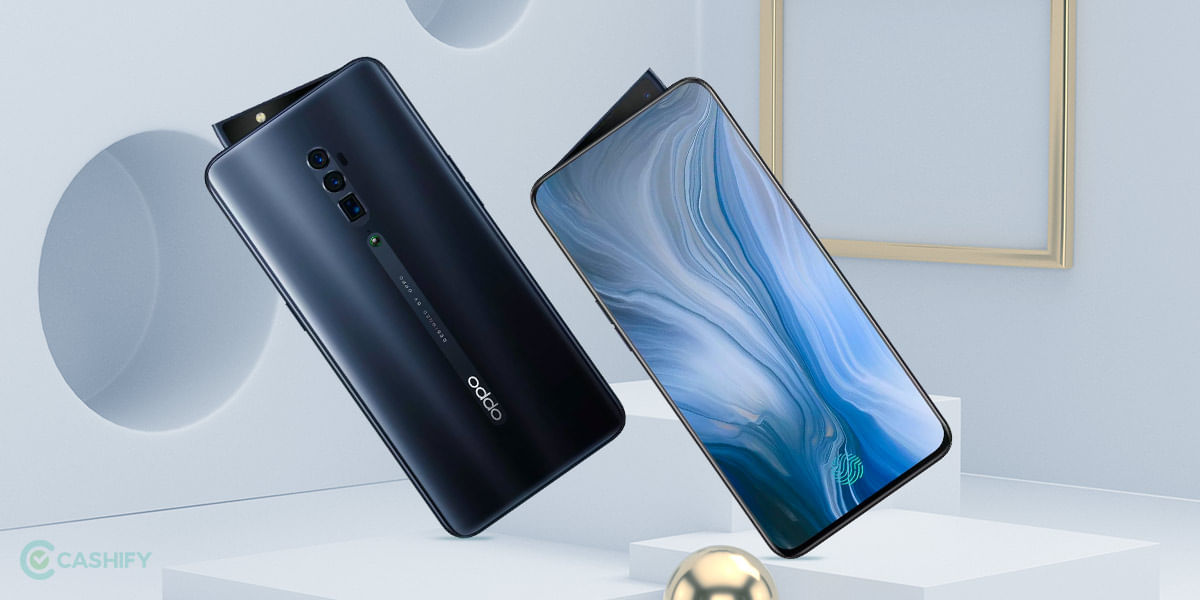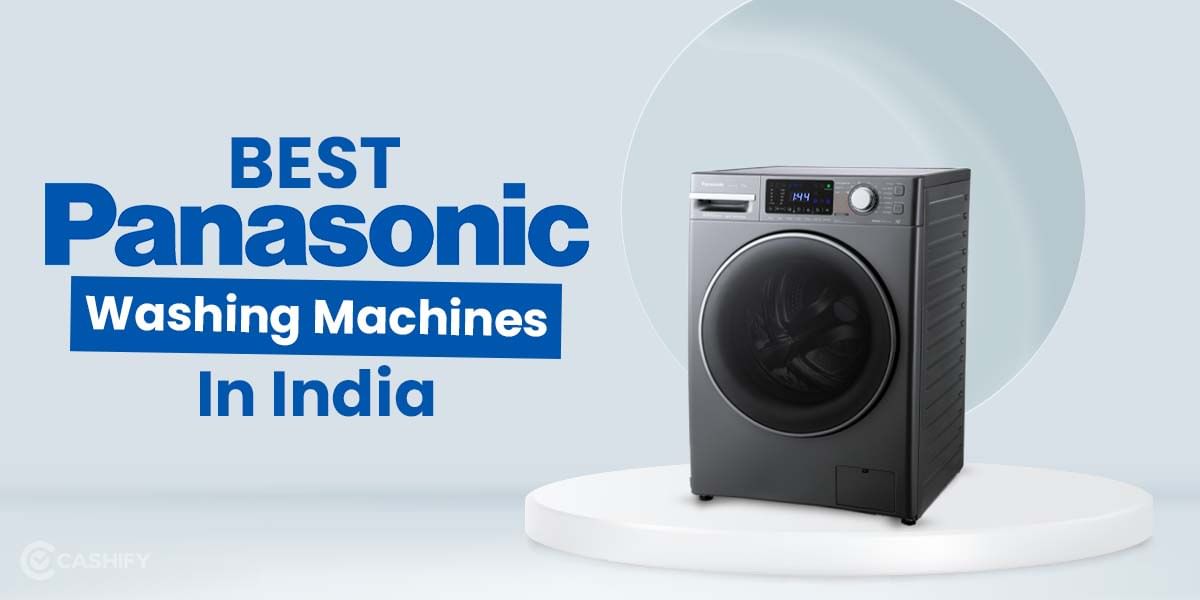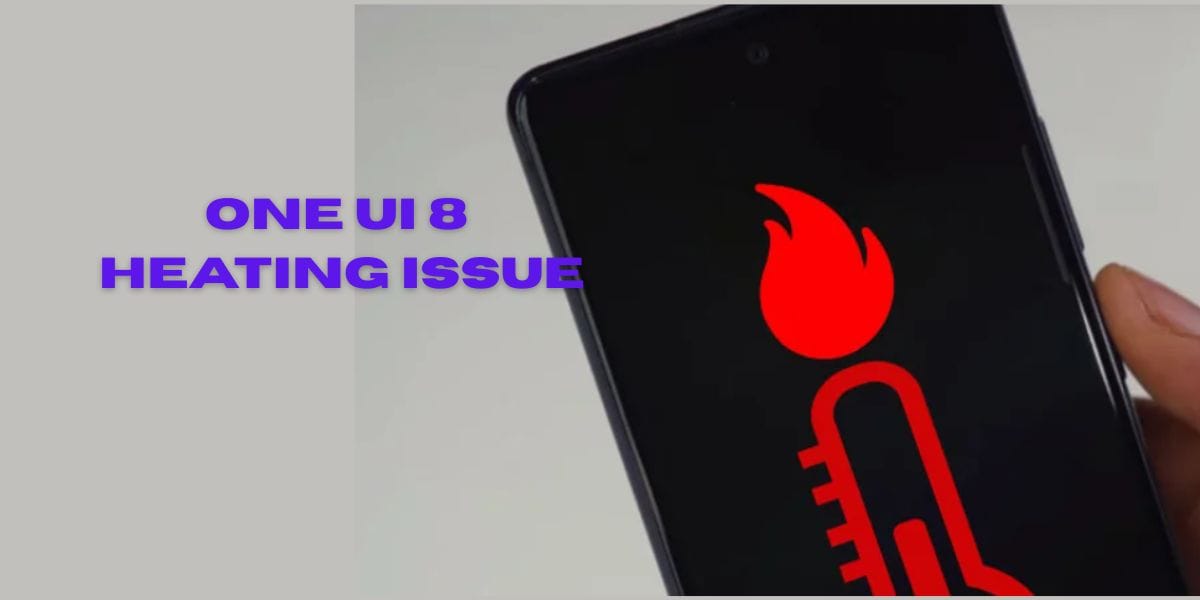Introduction
Earlier this year, Samsung introduced a new budget Galaxy lineup in the country with the launch of Galaxy M10 and Galaxy M20. The Korean behemoth has now added yet another smartphone to the lineup dubbed Galaxy M30. Samsung is trying everything in order to steal back the market share from the likes of Xiaomi, Oppo, Vivo, and the new entrant Realme.
The Galaxy M30 is basically an improved version of Galaxy M20 with various upgraded specifications. For one, the device features a much larger AMOLED display, triple rear cameras, high-res front snapper, and increased RAM capacity. With all these improvements, a Galaxy M30 with a higher price tag comes into the scene.

To find out whether these added features justify the increased cost, we decided to play around with the Galaxy M30 for a couple of weeks. Here is what we think of Samsung’s yet another budget attempt.
Price in India, Variant, and Availability
Samsung has launched the Galaxy M30 in two different storage options – 4GB+64GB and 6GB+128GB variants. Like the storage, the smartphone comes in two color options namely Gradation Blue and Graduation Black. As the name suggests, the device features the latest Gradient design at the back which we will talk about in detail further on.
Coming to the price tag, the base variant is up for grabs for INR 14,990 while the top-end option is priced at INR 17,990.
You can buy the device exclusively from the Amazon India as well as the Samsung Online Shop. Samsung is offering various offers along with the smartphone which includes No Cost EMI, MakeMyTrip vouchers worth INR 15,000 and Oyo hotel booking discount.
It is worth noting that these offers are available on Samsung’s online website only. You can still avail the No Cost EMI on Amazon India.
Box Contents
Samsung Galaxy M30 comes packed in a white color box having the device’s photo printed on the front. Opening the box, you will be greeted by a rectangular section which consists of a SIM ejector tool and some basic paperwork.
Underneath the section, you will find the Galaxy M30 laying there nicely wrapped up in protective cover. Along with the device, there is a 15W fast charger adapter and a USB Type-C cable. The brand has not bundled any type of earphones in the box.
Here is a quick overview of what you’ll be getting inside the box:
– Samsung Galaxy M30
– 15W Fast Charger
– USB Type-C cable
– SIM Ejector Tool
– Manuals and documentation
Specs at a Glance
Before we jump right into the in-depth review of Galaxy M30, let’s take a quick look at the specifications and features which this device brings upfront.
– Display: 6.4-inch Super AMOLED, 1080×2340 pixels
– Processor: Exynos 7904, 14nm
– RAM & ROM: 4GB & 6GB, 64GB & 128GB
– Rear Cameras: 13MP+5MP+5MP
– Selfie Cameras: 16MP, f/2.0
– Battery: 5000mAh capacity, 15W fast charging
– Software: Android 8.1 Oreo, Experience UI (upgradeable to Android 9 Pie)
– Weight: 174g
– Dimensions: 159×75.1×8.5 mm
With specifications out of the way, let’s jump right into our take on the all-new Samsung Galaxy M30.
Build and Design
As mentioned earlier, Samsung Galaxy M30 shares a similar design ideology as that of its other siblings but there are still some noticeable changes and upgradations. From the front, the Galaxy M30 looks exactly like the Galaxy M20 featuring a massive Super AMOLED display with a tiny notch housing a selfie camera.
When we turn the device to the other side, that’s where things get a little different. Unlike other Galaxy M-devices, Samsung decided to use the dual-tone gradient design on the Galaxy M30.
The all-new gradient design on the device does set it apart from the rest of the lineup. Personally, we loved the Gradient Blue color which has the dark blue tone at the bottom and the lighter blue tone at the top.
Another noticeable change is the addition of colored-matching ring around the secondary camera sensor which does look neat. Thankfully, the gradient design pattern also follows on the side which most of the other manufacturers generally forgets about. There is a triple rear camera module at the back accompanied by an LED flash and a fingerprint sensor.
Even though the Galaxy M30 is entirely made up of a plastic body, the device still feels solid in the hand. The devices which come with plastic body generally get scratches but surprisingly, the M30 didn’t get any. We will still recommend using a back case which will work as an extra layer of protection.
Thanks to the curved edges, rounded corners, and excellent weight distribution, the device feels a lot more comfortable even though it packs a humongous 5000mAh battery.
The volume rockers, as well as the power button, are located at the right side while the SIM tray can be found on the left. At the bottom, there is a USB Type-C charging port, a speaker grille, and a 3.5-mm headphone jack. Overall, the Galaxy M30 offers a user-friendly ergonomics with a sleek design and a comfortable in-hand feel. When it comes to the build, the dual-tone gradient finish does provide a distinct character but the brand could have done a little better.
In this price range, the competitors are offering much-attractive and somewhat premium build quality which is something Galaxy M30 lacks clearly.
Display
Moving on to the display, the Galaxy M30 features a big 6.4-inch Super AMOLED display which is something that its sibling doesn’t come with. The earlier Galaxy M-lineup devices make use of IPS LCD panels instead of the AMOLED ones. It is well known that the AMOLED panel offers a better experience than the traditional IPS LCD display.
It is also worth noting that the notch on this device is a little bit different than the Galaxy M20. Even though the brand market it is as an Infinity-V shaped, the notch feels more like a U-shaped. The tiny notch on the front adds up to the overall immersive experience of the display.
With FullHD+ resolution having 1080×2340 pixels, the colors are vibrant and the viewing angles are excellent on this device. As expected from an AMOLED panel, the brightness level on this phone is good, blacks are deeper, and contrast is much better. When it comes to the sunlight legibility, I didn’t face any issue with the device whatsoever.
In fact, I rarely had to change the brightness level manually while outside. The smartphone also comes with an Always-On display feature which, in my opinion, is always a nifty addition.
If you compare the display side by side with the Galaxy M20, then you will rarely see any major difference apart from increased brightness and more vibrant colors in the M30. The fact that the Galaxy M30 comes with a Super AMOLED panel gives it a solid edge over its competitors. We can clearly say that the Galaxy M30 has one of the best displays in this price range.
Performance
Under the hood, the Galaxy M30 is powered by Samsung’s very own and in-house Exynos 7904 chipset paired with up to 6GB RAM, up to 128GB onboard memory and Mali-G71 MP2 GPU. The Exynos 7904 SoC is manufactured using the 14nm fabrication process featuring eight cores – 2x Cortex A73 clocked at 1.8GHz and 6x Cortex-A53 clocked at 1.6GHz.
The Exynos 7904 is a decent processor which is capable of handling day-to-day tasks with ease but sadly, that’s not the case with the graphics-intensive workload. When compared with Galaxy M20, the device does offer a significant upgrade in terms of performance but the heavy multitasking is something which this device still lags behind.
In our daily usage, we find the performance on the Galaxy M30 to be very inconsistent. This means that the device sometimes feels a little quick while the other times it feels painfully slow.
With that said, the Galaxy M30 will not stutter or lag when it comes to the day-to-day tasks. Even in terms of casual multitasking, we did not find any major issue with the device. Things get horrible when it comes to some heavy multitasking and of course gaming. We tried playing PUBG Mobile on the device and the experience was just okayish.
There were many occasional frame drops and lags throughout the session. To keep the stats more accurate, we also tried to play Modern Combat 5 and witnessed the same. For those who’re planning to do graphics-intensive gaming, the Galaxy M30 might not be able to satisfy you.
An average user will not find any trouble using the Galaxy M30 since it comes with at least 4GB of RAM and plenty of storage. The apps stay in memory for a good amount of time and the casual multitasking is pretty decent. Samsung also managed to integrate a dedicated MicroSD card slot which very appreciable. You can bump up the internal storage to up to 512GB which is more than enough for most users out there.
Software
Coming to the software, Samsung Galaxy M30 runs on the older version of Android i.e. Android 8.1 Oreo out-of-the-box based on the Samsung Experience UI. Thankfully, Samsung decided to later upgrade the Galaxy M30 to the latest Android 9 Pie based on the company’s new One UI software.
Personally, One UI software is a significant upgrade over the previous Experience UI. The new software feels lighter and cleaner than the previous one. There are a lot of customization tools at your disposal which can also enhance your overall user experience to a large extent.
Since the device comes with AMOLED panel, the night mode in One UI comes in very handy when it comes to that extra battery saving. To customize your phone even further, you can make use of the company’s very own Good Lock application available on the Galaxy app store.
In conclusion, the latest One UI does improve the user experience to a large extent. The software looks much more optimized, snappy and quicker than before. With One UI, Samsung is focussing on more cleaner, elegant and one-handed usage. Compared with the competitors, the Galaxy M30 is far ahead in terms of software with the new One UI update.
Cameras
Samsung Galaxy M30 is the company’s first budget device having a triple rear camera module. At the back, there is a primary 13MP sensor, secondary 5MP ultra-wide-angle lens, and the third 5MP depth sensor. The primary sensor comes with an aperture of f/1.9 while the remaining two has the same f/2.2 aperture.
The camera app interface on this phone is also very user-friendly with all the options laid out nicely. You can switch from normal to wide-angle lens just by a single tap.
Coming to the image quality, the primary 13MP sensor clicks photos with a good level of brightness, accuracy and high level of the details in the daylight conditions. Unlike other devices, the clicked pictures are much more accurate in terms of colors and there is rarely a case of over-saturation.
In short, you’ll get what you’ll see in the real without any color shift by the software. It is worth noting that the autofocus on this phone is not that fast and the phone sometimes struggles when it comes to focus on close shots. The brand might fix this issue in the future OTA software updates.
The Galaxy M30 also comes with a wide-angle lens which is something that many other budget phone lacks. With a wide-angle lens, you can click photos with a much wider field of view but again you’ll have to compromise a little on sharpness and detailing. There is a depth sensor too which offers better depth-of-field effect and fairly accurate blurred out effect.
At this price range, the Galaxy M30 comes with one of the best cameras and thanks to the triple rear setup, the device can easily beat the competitor in terms of picture quality.
Coming to the low light conditions, that’s where things turn around a little bit. The budget segment devices have always struggled in lowlight conditions and as expected, that’s not the strongest suit of Galaxy M30. There are lots of noises and below-average details in the clicked pictures.
You can click impressive portrait images thanks to the 5MP depth sensor. With impressive background blur and good edge detection, the clicked pictures turn out to be brilliant in daylight. In low light conditions, the phone again starts to struggle a lot.
On the front, there is a single 16MP sensor having an aperture of f/2.0. The selfie camera is one of the strongest suits of this device and it manages to do exceptionally well. Selfies turn out to be bright and vibrant with a good level of the details and that of course in daylight conditions.
In conclusion, Samsung Galaxy M30 is one of the best camera phones out there which can really click impressive shots in daylight conditions. In low light, the phone struggles a lot which is the case with almost every other budget device except Redmi Note 7 Pro (thanks to the Night Mode feature in it). For selfies, we can clearly say that Galaxy M30 has one of the best selfie sensors at this price range.
Battery Life
Samsung Galaxy M30 is fueled by a massive 5000mAh battery capacity with the 15W fast charging support. With a humongous battery at its disposal, the Galaxy M30 manages to give you an impressive screen on time. In our daily usage, the device was lasting for more than a day easily with around 7 to 8 hours of screen-on-time which is literally quite impressive.
Even if you do heavy graphics-intensive tasks in this device, the 5000mAh battery will make sure that the device can be with you for an entire day.
Enabling night mode in the One UI will give you much more battery life. On moderate usage, the device can easily go for around two days on a single charge. For charging, the device comes with 15W fast charger adapter and a USB Type-C cable.
Even though the phone has a massive battery packed inside, it takes just 2 hours and 50 minutes in order to charge completely. In terms of battery life, the Galaxy M30 throws all the other competitors out of the water easily.
Audio, Biometrics, and Connectivity
Speaking of audio, the Galaxy M30 features a speaker grille at the bottom with decently high audio output. The bottom-mounted speaker works good at low volume levels but when you crank up the volume a little higher, you tend to hear distortion in the output which is not good. The sound quality of the speaker could have been better but sadly, that’s not the case.
There is a 3.5-mm headphone jack which surprisingly has an impressive audio output. Coming to the call quality, we did not face even a single issue whatsoever. The network reception is excellent and so is the microphone and earpiece quality.
For biometrics, the device features a physical fingerprint sensor at the back which is the fastest one out there at this price tag. The rear fingerprint reader works exceptionally well with faster unlock and reliable security. The device also comes with Face Unlock which is quite fast too but I seriously doubt the reliability of that since it uses 2D map for face representation.
Samsung Galaxy M30 has all the necessary and standard connectivity features which include dual-band Wi-Fi b/g/n/ac, Bluetooth 5.0, USB Type-C and dual SIM card support (dual-4G & dual-VoLTE).
Pros and Cons
Pros
– Super AMOLED display
– Massive 5000mAh battery
– Fastest fingerprint sensor
– Impressive daylight cameras
– One UI software
– Exceptional selfie camera
– Latest connectivity features
Cons
– Low-light camera performance could have been better
– Poor gaming performance
– Feels horribly slow sometimes
Samsung has managed to create an impressive smartphone which offers excellent user experience except for a few things. There is no other smartphone at this price range which comes packed with Super AMOLED panels, impressive battery life, and satisfying daylight camera performance. Even though the device could have done better in the build, it still feels solid and looks better than the most smartphones out there.
The only major issue with the Galaxy M30 is the performance and low light cameras. When it comes to the normal tasks or even multitasking, the Galaxy M30 manages to do well but that’s not the case with gaming. If you’re someone who does gaming on a smartphone, then you should forget about this device altogether because you’re going to face horrible frame rate drops in the entire gaming session.
With that said, Samsung Galaxy M30 is a device made for an average user out there who does regular day to day tasks and don’t do heavy gaming at all. The lowlight camera performance sucks and that’s the case with all the phones out there except few so I am not gonna complain about that. If you can somehow ignore the gaming performance or you’re an average smartphone user, the Galaxy M30 is an excellent smartphone for you.
Speaking of price to performance value, the Redmi Note 7 Pro still manages to be in the lead with its attractive design, excellent performance, and much better lowlight cameras. If you’re out there looking for the best and can ignore the annoying ads in the UI, then Redmi Note 7 Pro would be a perfect fit for you.

